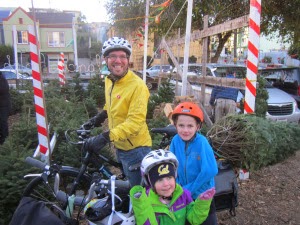The COVID-19 pandemic brought us all sorts of deniers. There were those who believed, even as they were dying from it, that the virus didn't exist--or that it was created by a Chinese lab or Bill Gates-- funded by George Soros because, well, don't you know, he funds Antifa, gender affirmation surgery and everything else Fox News fans hate.
Only slightly less irrational were those who claimed vaccines were ineffective or were created by Bill Gates, who installed microchips in them. And, of course, it was all paid for by you-know-who.
During that annus horribilis of 2020, there was another kind of denial not directly related to COVID. That, of course, had to do with the election: Of course Donald Trump couldn't have lost because, well, he never loses at anything. There absolutely must have been voter fraud or some other nefarious activity that ushered Joe Biden into office.
Now here's another form of denial I hadn't heard about until today: the COVID pandemic-induced bicycle shortage was--well, it wasn't. At least, that's what Jay Beaman has said.
 |
| Jay Beaman in his shop, Scenic Routes. Photo by Nicholas David for Mission Local. |
He isn't someone who went down a QAnon rabbit hole when he had too much time on his hands after being furloughed from his job. While he did indeed get sent home when the restaurant where he worked closed during the COVID lockdown, which came earlier and was stricter in his hometown of San Francisco than in other parts of the US, his denial of the bicycle was based on something he, and many of us know: There were "hundreds and hundreds of thousands of bikes languishing in garages all over the city." With "a little bit of attention and time," they could be ridden for fun, fitness or transportation just as well as the bikes that had disappeared from bike shops' sales floors and suppliers' warehouses.
So he gave those neglected machines the TLC they needed--in his North of Panhandle apartment. Soon his longtime friend and riding buddy Mike Connolly joined him. Soon after, wheel builder Kat Siegal and transportation advocate Emily Horsman came aboard.
Together, they would build a brick-and-mortar shop in a Balboa Street storefront. Ever since, in addition to repairing and selling bikes, Scenic Routes has conducted repair classes and other events in its space. "Our primary goal is to create a space that is centered around the community," Beaman says. He defines that community as the geographic neighborhood and "transit people, bike people, urbanists." Most of all, it's "people that believe in cities," he explains.
Anyone who's worked in or owned a bike shop knows you don't do it to get rich. (An old joke: "How can you end up with a small fortune in the bike business? Start off with a big one.") Beaman reports that Scenic Routes ended last year with a net profit of one percent, a business model he half-jokingly calls "anti-profit."
His vision is that it won't be a joke: He fantasizes having a rich benefactor (or benefactors) so he can lose money every year. "How cool would it be if some rich person was like, 'Look, I am going to put a million dollars in your account, that's your endowment," he says. "Then we could just lose 30 or 40 thousand dollars a year and it would be fine."
Now there's a business model I'm sure the Stanford MBA program--or any other MBA program--doesn't teach. For that matter, I'm not sure that any MPA program that trains people in non-profit administration has such a curriculum.
Perhaps those who administer and teach such programs are the real deniers: They probably wouldn't (or couldn't) acknowledge the need for businesses or organizations like Scenic Routes.







